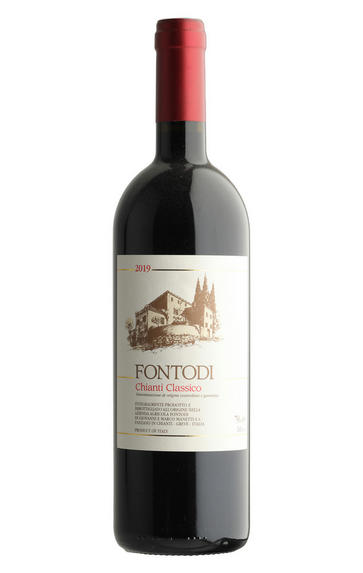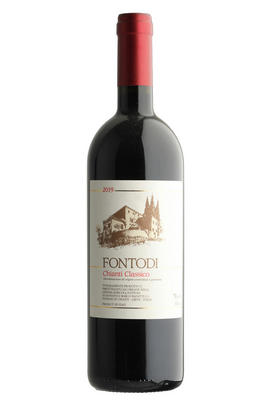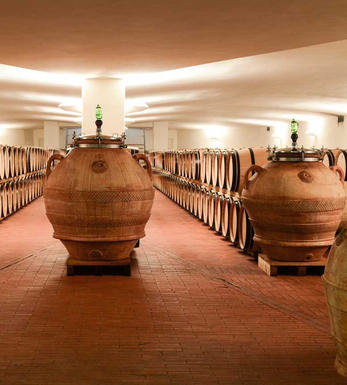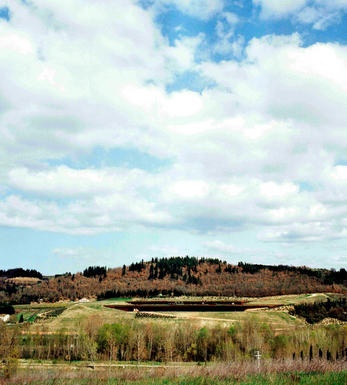
2019 Chianti Classico, Fontodi, Tuscany, Italy

Critics reviews
The 2019 Chianti Classico is fresh, vibrant and so expressive. Aromatic and expansive, with terrific nuance, the 2019 is one of the most elegant Chianti Classicos I have tasted at Fontodi. Crushed flowers, red/purplish fruit, spice, lavender and pipe tobacco build into the delineated, vibrant finish.
Drink 2022 - 2034
Antonio Galloni, Vinous.com (June 2022)
Panzano. 100% Sangiovese. Certified organic.
Lustrous deep ruby. Bright sour-cherry nose with savoury, minerally notes and what smells like a note of oak. Fantastic balance between succulent fruit, lots of juicy acidity and gripping but ripe tannins. Tactile fireworks.
Drink 2022 - 2030
Walter Speller, JancisRobinson.com (May 2022)
This succulent red is hallmarked by very pure expressions of cherry, raspberry, violet and mineral. Firmly built, with energy and a persistence that extends the fruit, tobacco and mineral elements on the finish. Drink now through 2030.
10,000 cases made, 3,000 cases imported.
Bruce Sanderson, Wine Spectator (September 2022)
Sweet berry and cherry aromas with plenty of flowers on the nose and palate. Medium body. Fresh finish. From organically grown grapes.
Delicious now
James Suckling, JamesSuckling.com (August 2022)
This benchmark Panzano estate is still in the hands of long-time owner, Giovanni Manetti, but the new generation is very much in evidence: Manetti’s son Bernardo, daughter Margherita and nephew Costa now play fundamental roles as the estate continues to grow.
Fontodi’s 2019 is striking and pronounced in fragrance. Liquorice and black cherry are offset by coffee, char and tobacco. Vigorous tannins yield slowly but surely as this makes its way across the palate. Its structure is well-proportioned with the ripe black fruit, substantial but never heavy or imposing, underscored by some tanginess. As always, it soars above its category.
Drink 2023 - 2033
Michaela Morris, Decanter.com (March 2022)
About this WINE

Fontodi
Fontodi is located in the hills south of the town of Panzano in the heart of the Chianti Classico region.This 90-hectare estate was in a run down and derelict state when it was acquired by Domiziano and Dino Manetti in 1968. They totally replanted the vineyards and renovated the winemaking facilities and today Fontodi is recognised as one of the finest producers in the region.
The estate is now run by Macro and Gioivanni Manetti, ably assisted by winemaker Franco Bernabei. Its benchmark Chianti Classico is made from a blend of Sangiovese and Canaiolo and aged in large oak barrels whereby the Chianti Classico Riserva has a small amount of Cabernet Sauvignon in the blend, and a portion is aged in small French barriques. Its finest wine is the 100% Sangiovese, Flaccinello della Pieve.

Chianti Classico
Chianti Classico is a leading Tuscan DOCG zone which covers approximately 7,000 hectares between Florence and Siena. Its vineyards stretch into the Apennine foothills at altitudes of between 150m and 500m, and encompass two distinct terroirs and styles. The sandy, alluvial soils of the lower sites yield fuller, meatier wines while the limestone and galestro rocks of the higher vineyards deliver finer, more ethereal examples.
The origins of Chianti date back to the Middle Ages, although Chianti Classico was really born in 1716 when Grand Duke Cosimo III of Tuscany classified the zone, identifying the villages of Radda, Greve, Panzano, Gaiole and Castellina as the leading sites; these same villages still represent the nucleus of the Chianti Classico DOCG today. The regulations have been revised, however, to insist that the wine is made from a minimum 80 percent Sangiovese and a maximum 20 percent Canaiolo and ameliorative grapes (ie Merlot and Cabernet Sauvignon); from the 2006 vintage, no white grapes are allowed.
Chianti Classico cannot be released until 1st October in the year following the harvest, while Chianti Classico Riserva must undergo 24 months of ageing before release, including at least three months in bottle. At the region’s top addresses, French barriques are gradually being adopted in the place of the traditional, larger slavonian botte.
Recommended Producers: Monte Bernardi, Tenuta Fontodi, Castelo di Ama, Bibbiano

Sangiovese
A black grape widely grown in Central Italy and the main component of Chianti and Vino Nobile di Montepulciano as well as being the sole permitted grape for the famed Brunello di Montalcino.
It is a high yielding, late ripening grape that performs best on well-drained calcareous soils on south-facing hillsides. For years it was blighted by poor clonal selection and massive overcropping - however since the 1980s the quality of Sangiovese-based wines has rocketed upwards and they are now some of the most sought after in the world.
It produces wines with pronounced tannins and acidity, though not always with great depth of colour, and its character can vary from farmyard/leather nuances through to essence of red cherries and plums. In the 1960s the advent of Super Tuscans saw bottlings of 100% Sangiovese wines, as well as the introduction of Sangiovese/Cabernet Sauvignon blends, the most famous being Tignanello.


Buying options
Add to wishlist
Description
Chianti Classico is a small, high-quality vineyard area in the heart of Tuscany. Set among the rolling hills between Florence and Siena, this is distinct from the larger zone just called Chianti. Fontodi’s 2019 is a wonderful example of the style: sour cherries, floral and herbal notes and a touch of spice. It is mouth-puckeringly dry with real intensity of flavour, all balanced with refreshing acidity and a long, lingering finish. This is made for food: ideally something Italian and tomato-based, though you wouldn’t go wrong with a Bistecca alla Fiorentina either.
Drink now to 2030
Charlie Geoghegan DipWSET, Berry Bros. & Rudd (June 2023)
wine at a glance
Delivery and quality guarantee